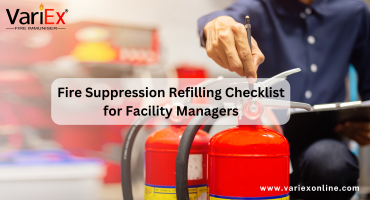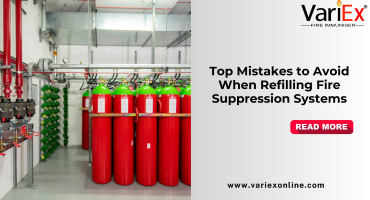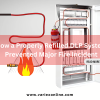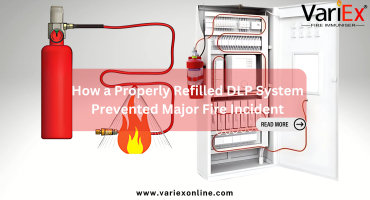![]()
Fire Immuniser
+91-7829629111
Email: info@variex.in
Varistor Technologies Pvt. Ltd.
Block-1, First Floor, Ardente Office One, Hoodi Circle, ITPL Main Road, Bengaluru, Karnataka 560048, IN
What Is Delay Mode In Fire Alarm System
What Is Delay Mode In Fire Alarm System
Fire detection and alarm systems are crucial components in maintaining the safety and security of buildings and occupants. These systems prompt an immediate response when fire sets off a detection component. However, these systems also feature alternatives like a delay mode, an approach not everyone might be entirely familiar with. This article aims to provide a comprehensible explanation of the delay mode in a fire alarm system, its benefits, and its overall relevance in enhancing fire safety.
The Basics of a Fire Alarm System
Before diving into the delay mode feature, it is crucial to understand the basics of a fire alarm system. The system encompasses several components, including fire detectors (including heat and smoke detectors), alarm sounding devices, manual call points, control panels, and power backup. Once a fire starts, the detection devices sense the increase in heat or smoke, triggering the alarm system and initiating the necessary emergency processes to tackle the potential hazard.
Understanding Delay Mode in Fire Alarm Systems
The delay mode is a feature designed to prevent false alarms, inadvertent panic, and unrequired response from emergency services. Delay mode, also known as alarm verification, essentially provides a pre-set period during which the system verifies the fire detection event's legitimacy before setting off the actual alarm. It adds a delay between the initial detection of a potential fire and the triggering of the fire alarm. This means that the alarm will not alert building occupants or local authorities immediately.
Operations of a Delay Mode
An alarm system operating in delay mode will wait for a stipulated period, normally about 1 to 3 minutes, before sounding the alarm. During this period, the control panel receives and processes additional data to ascertain whether the initial detection was indeed indicative of a fire. This could involve bureaucratic verification of additional detectors situated in the same zone (known as “cross-zone” verification), or a re-evaluation of the initially activated detection sensor.
If the control panel determines that the alarm was false within the delay period, it will cancel the alarm process and reset the system to its normal surveillance state. However, if the presumptive fire detection episode is not disconfirmed during the delay period, the system will activate the fire alarm, initiating the necessary response protocols.
Benefits of the Delay Mode
The key advantage of the delay mode is the reduction of false alarms. False alarms can not only create panic but also lead to the unnecessary expenditure of resources. The delay mode helps to ensure that the resources of fire control and emergency services are used efficiently and effectively.
Moreover, false alarms can lead to desensitization among building occupants, who may then ignore actual fire alarms. By reducing the incidence of false alarms, the delay mode can thus enhance the overall effectiveness of the fire alarm system.
Considerations when Implementing Delay Mode
While the benefits of the delay mode are clear, it is important to consider certain factors before implementing it. The length of the delay during the verification process should be carefully calibrated. A too-long delay could potentially lead to precious seconds lost during an actual fire situation, while a too-short delay might not sufficiently prevent false alarms.
Also, when implementing a delay mode, the fire alarm system should retain an override function to avoid such risks. This function would allow individuals, upon visually confirming a fire, to manually activate the alarm immediately, even when the system is in verification mode.
Conclusion
The delay mode in fire alarms, by correctly incorporating and executing, can enhance the effectiveness and reliability of fire safety measures. It is crucial in minimizing false alarms and optimizing the use of fire and emergency services. However, while considering the implementation of delay mode in the fire alarm system, one must find a balance to ensure timely response to actual fire incidents. As with all features of a fire alarm system, the delay mode is a critical tool that needs to be understood, implemented, and managed correctly to provide optimum fire safety.
Final Say
At VariEx.in and VariexOnline.com, we specialize in supplying and installing top-quality fire fighting systems and equipment. From fire extinguishers to advanced suppression systems, we offer comprehensive solutions tailored to your needs. Our experienced team ensures precise installation and maintenance for optimal safety.
Trust VariEx for reliable fire protection. Contact us online or call 7829629111 to learn more.
"WHAT YOU CAN READ NEXT"
 Read more +24 November 2023 in Fire Extinguisher
Read more +24 November 2023 in Fire ExtinguisherWhat types of fire extinguishers are available for different fire classes?
 Read more +28 April 2025 in Fire Suppression
Read more +28 April 2025 in Fire SuppressionFire Suppression Refilling Checklist for Facility Managers
 Read more +25 April 2025 in Fire Suppression
Read more +25 April 2025 in Fire Suppression





